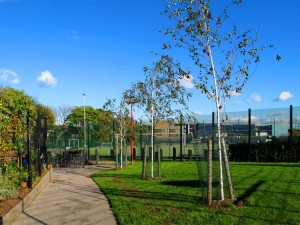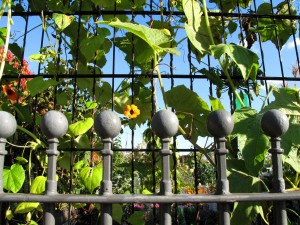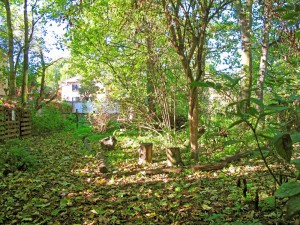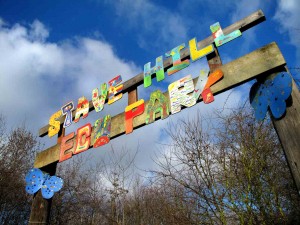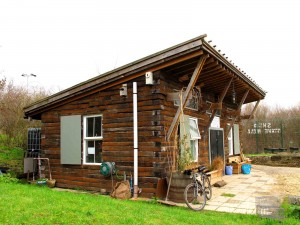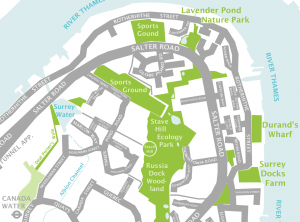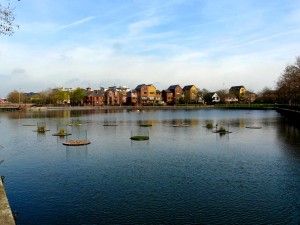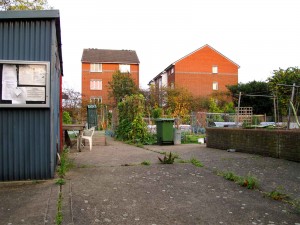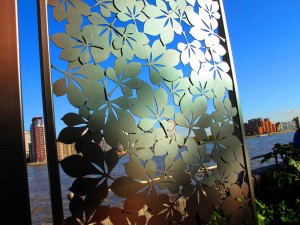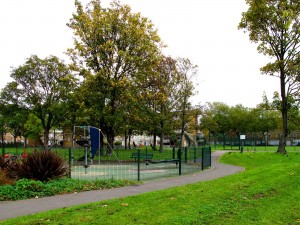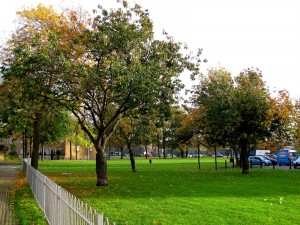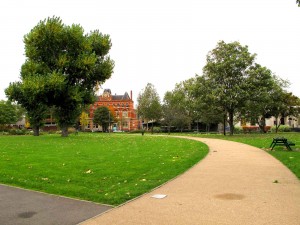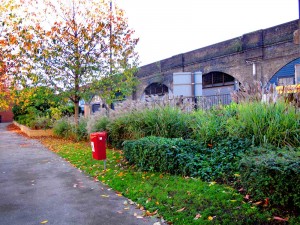You might be lucky one day and pleasantly surprised to find, tucked away behind a row of houses on Lynton Road and Abercorn Way, a friendly local park with a long history and a very big heart.
Not always this discrete and hidden away, Paterson Park historically formed part of a much larger swathe of gardens and meadowland that covered Bermondsey and much of Rotherhithe. Its future was eventually marked out by the construction of the canal and then later by the railway.
In 1807 the first stretch of the Grand Surrey Canal was built. It ran from the River Thames and the Surrey Commercial Docks in the north of the borough and headed south to the Old Kent Road. In 1810 a second stretch reached west to Camberwell and eventually, in 1826 a final arm opened a ribbon of waterway stretching further south to Peckham.
Then, in 1843-4 two railway companies added the Bricklayers Arms branch to the existing railway line. The South Eastern (SER) and the London and Croydon (L&CR) constructed a new passenger terminus and goods station which began to dominate the area and was eventually to completely change the landscape, giving it a newfound semi-industrial identity.
Almost one hundred years later during World War II, much of the area was bombed and Paterson Park was first created and given it’s official status as a public space by the London County Council (LCC) out of part of this bomb site. The first section of the park was opened on 27th October 1953 by the Rt Hon Clement R Attlee (1883-1967) and was named after Alexander Paterson (1884-1947) the great prison reformer who’d adopted Bermondsey as his home for a large part of his life.
Even now with its much diminished size, Paterson Park punches above its weight and remains symbolic of the feisty character of the local community who’ve had to band together over the years to protect it and who are still required to look out and care for its survival today, ensuring the park remains intact for future generations to enjoy.
Paterson Park was finally refurbished in 2006 and was awarded a Green Flag in 2009. The design included a completely new layout with pathways, terracing, boundary railings, gates, seating and lighting. Playground and ball court areas were provided and allotments were built along the whole of the north side of the park. A new entrance from Abercorn Way added to those in Monnow Road and Welsford Street, vastly improving the parks access.
